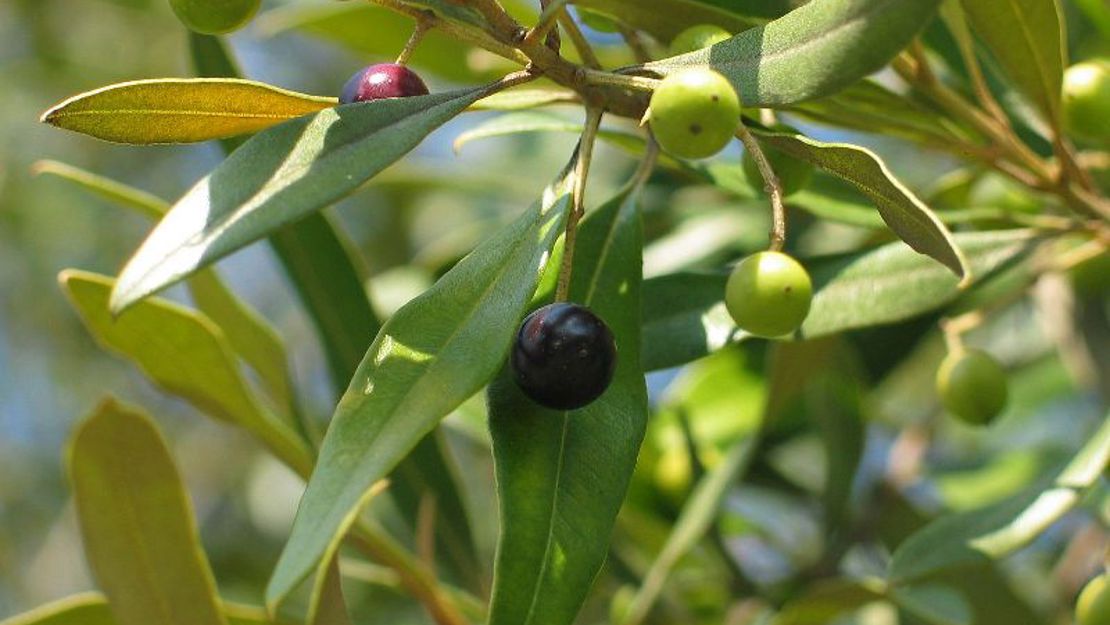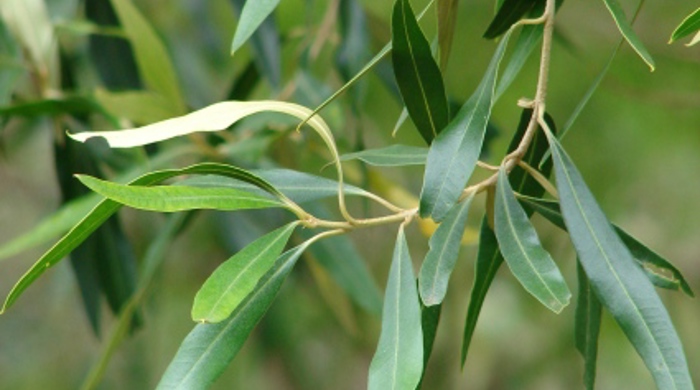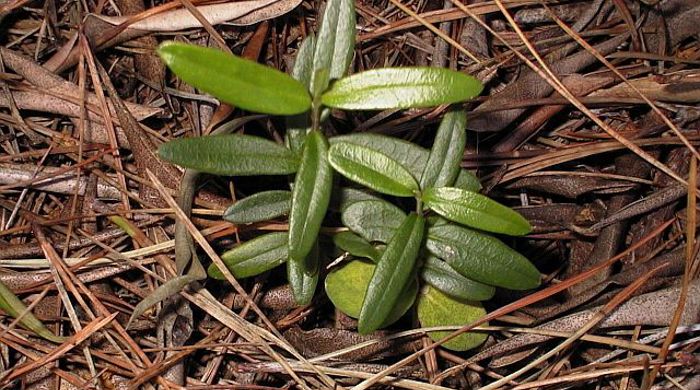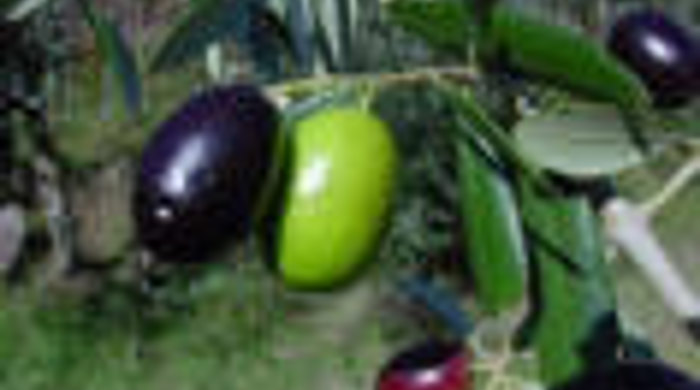Olea europea
Feral olive
Family: Oleaceae
Origin: Africa, Eurasia

Regional Pest Management Plan (RPMP) status
- Not a legally declared pest
General description
Evergreen tree or shrub < 15 m tall. Stems are erect and multi-branched. Leaves are opposite, narrow, dark green on top and silvery underneath. Flowers are small, white and borne in clusters in July – March. Fruit is a fleshy green drupe that ripens to black and contains one seed.
What you need to know
Although feral olive is not a legally declared pest plant, it may still be invasive in some situations. Consider lower risk alternatives for your garden, such as native plants.
Habitats
Open areas, riparian margins, cliffs, sand dunes, forest gaps and margins, roadsides.
Dispersal
Seeds dispersed by birds and other animals. Vegetative spread from suckering. Human-mediated dispersal through cultivation.
Impact on environment
Potential to outcompete native vegetation and suppress seedling recruitment. Increases fire risk.
Control
Site Management
Follow up treated areas 3 times per year. Encourage natural regeneration of native plants or replant treated areas where possible after 2-3 treatments to establish dense ground cover and minimise reinvasion.
Recommended approaches
Physical control
Method: Dig out.
Plant parts requiring disposal: Seeds.
Disposal options: Remove to greenwaste or landfill if practical.
Biocontrol
Biocontrol is currently not available for this species.
Community agrichemical control recommendations
No qualifications: Cut stump and paste freshly cut base of stems with metsulfuron gel.
Basic Growsafe certified: Cut stump and spray freshly cut base with 5g metsulfuron-methyl per 1 L of water.
Certified Handler/Experienced agrichemical user: Foliar spray with 5g metsulfuron-methyl per 10L of water and 20ml penetrant.
Caution: When using any herbicide or pesticide please read the label thoroughly to ensure that all instructions and safety requirements are followed.






